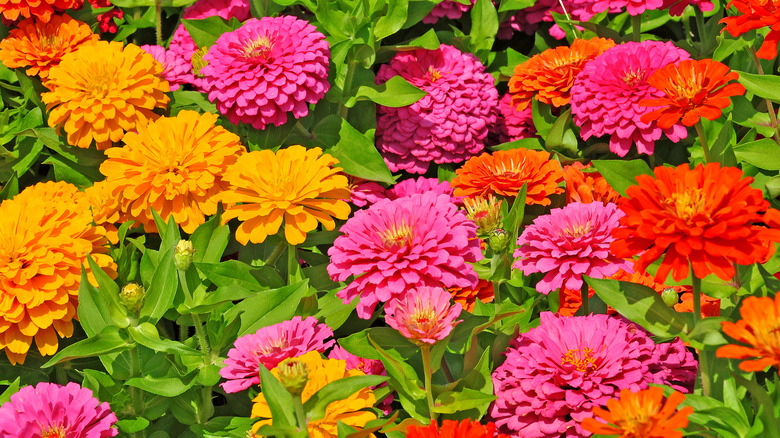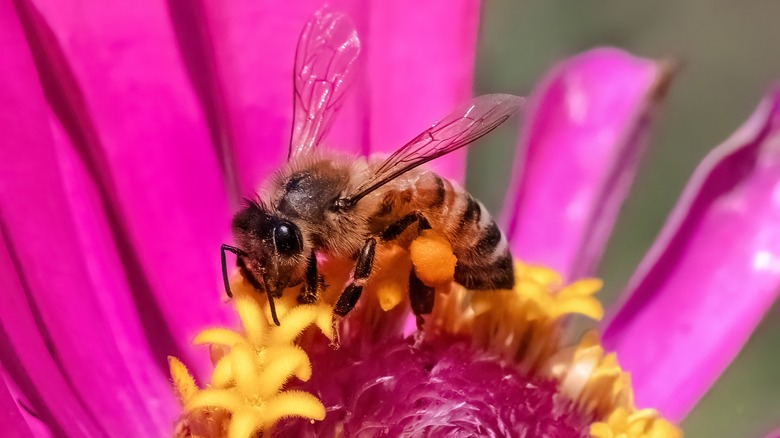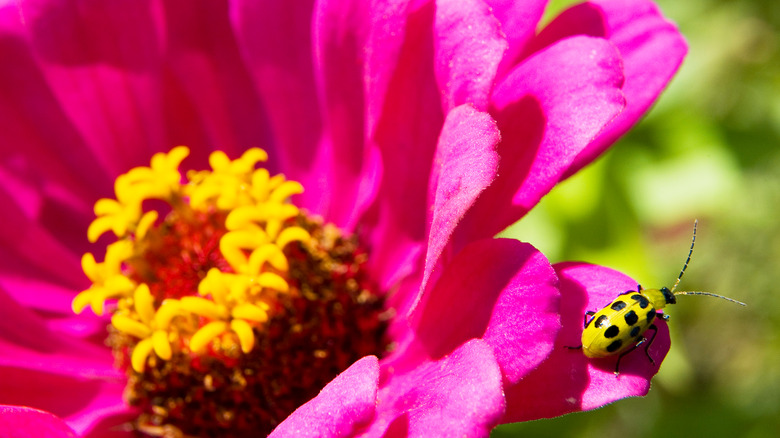If You're Not Planting Zinnias Alongside Cucumbers, You May Want To Think Again
Companion planting is a method many gardeners use because of the benefits certain plants bring to other plants. There are many plants you can put together to increase pollinators or reduce pests, among other benefits. Zinnias and cucumbers may not seem like an obvious pair at first, but zinnias benefit cucumbers so well that they are, in fact, worth trying out together. Zinnias are like magnets to bees and butterflies, and if you can increase the pollinator population in your garden, you can expect to have a larger cucumber harvest since the pollinators will tend to the cucumbers in the area. Zinnias also act as a trap crop for cucumber beetles since the beetles tend to be more drawn to the flowers than the cucumbers.
Both plants need plenty of sunlight, and cucumbers need more water than zinnias, so separate containers or beds that are near each other will be the best way to help them coexist. Zinnias may tower over cucumber plants and block out the sunlight, so plant them on the north or east where they won't cast as much shade. Zinnias are prone to powdery mildew, so be sure to keep them out of consistently moist soil; they're happier when they can dry out between waterings. You can alternate rows of cucumbers and zinnias or place zinnias in containers or grow bags near the cucumber bed.
Zinnias attract much-needed pollinators
If you've ever looked up ways to bring more pollinators to the garden, you probably saw zinnias on the list. Their tall, flat flowerheads are easy for pollinators to locate and land on, and their easily accessible nectar is irresistible. Cucumbers require pollinators for a majority of their pollination, so if you don't have bees, flies, and butterflies around your plants, you won't see a lot of fruit to harvest unless you pollinate the plants yourself. This is why zinnias are such a good addition to your cucumber bed; they'll introduce pollinators to the area in no time.
Zinnias grow quickly and can be deadheaded to encourage more flowers. With proper care, you'll only need to plant them once and still get a summer full of zinnias. Succession planting will ensure you have plenty of blooms throughout the season, allowing you to have a longer cucumber harvest. You don't have to plant zinnias right next to cucumbers for best results; planting them in several places around your garden will attract pollinators from all directions. If your cucumbers are in the middle, you're bound to see bees and butterflies stop there.
Cucumber beetles like zinnias
Zinnias can also function as cucumber beetle bait, which is a welcomed surprise. The aptly named beetles love their cucumbers, but they're known to feast on flowers like roses and zinnias, too. When planted near your cucumbers, the zinnias will attract the beetles and hopefully keep them off your cukes.
Cucumber beetles are tricky little critters. Some ladybugs are yellow with black spots and look a lot like annoying cucumber beetles. You can tell the difference because the good beetle is more rounded and has yellow "eyes" (two spots) on its rounded black neck, while the pest is slender and has larger brownish-black spots, long antennae, and a solid yellow neck. The cucumber beetle can burrow into the zinnia ruffles before they bloom, so blooming flowers will be damaged. Plant extra zinnias if you want to use them as a trap crop but still want some pretty ones for cut flowers.



